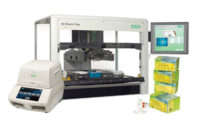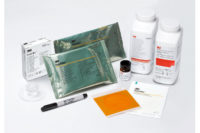Recent innovations in pathogen testing have made tests faster and more accurate than before. Dairy Foods asked experts in the pathogen-testing field — Diana Sanchez, senior dairy marketing manager for bioMerieux, Marcy-l’Étoile, France, and Raj Rajagopal, specialist /lead global technical service for St. Paul, Minn-based 3M — about new developments in rapid testing and what dairy processors should keep in mind when choosing a testing method.
Their responses were shortened.
Dairy Foods: What new technologies have come out in the rapid pathogen testing category, and how do they work?
Raj Rajagopal: Within the last decade, new molecular tests have been developed based on loop-mediated isothermal amplification (LAMP) technology to simplify and quicken the testing process. 3M has pioneered the commercialization of LAMP technology with the launch of the 3M molecular detection system with several assays for foodborne pathogens of concern.
The adoption of the 3M molecular detection system based on LAMP technology as a primary method for detection of Salmonella and Listeria by USDA food safety and inspection service attests to the validation of LAMP technology as well. In addition, over the last year, 3M has made this system interoperable with an automated multichannel pipetting technology. The technology integration increases testing volumes and efficiency and reduces the potential of human-introduced error by eliminating the need for other operating steps.
The other big recent development is that sequencing-based methods, where an entire genome of a pathogen can be deciphered, are being used to detect pathogens. This method is still in its infancy and needs highly technical capability and data analysis.
Dairy Foods: What are the benefits of using in-house rapid pathogen testing in a dairy plant?
Diana Sanchez: Maintaining your testing program internally provides many operational benefits to your organization: faster time to result, faster release of product, faster response to adverse events and faster implementation of corrective actions. Many rapid methods are easy to use, too. This allows flexibility for laboratory personnel. For example, we’ve helped several dairy manufacturers successfully implement in-house testing using existing employees from other functional backgrounds such as production. With the proper training, [the lack of] an advanced degree in microbiology is no longer a barrier to implementing a successful testing program.
Dairy Foods: What are the potential downsides to this kind of testing?
Sanchez: It is paramount to ensure the method you select [is] “fit-for-purpose.” In other words, is the technology appropriate for your sample types, sample sizes and environment? Does your diagnostic partner have the appropriate validations or verifications to ensure accuracy of results? If not, do they have the expertise and ability to help you get the data you need?
The dairy industry is rapidly innovating — new processes, new ingredients, new categories and cultures — these can all have an impact on a method’s ability to detect microbiological organisms of interest. Work with your diagnostic partner to find the right method for your unique product needs.
Dairy Foods: What would you say to a processor considering changing their testing method?
Rajagopal: A processor that is considering switching to a new pathogen testing method needs to make sure the method is applicable to the food matrices they need to test. They should choose methods that have received applicable certifications by a recognized independent body, a U.S. regulatory body or an ISO method. The validated method should be fit for the intended purpose and application, which the processor needs to determine.
The methods need to be performed by a laboratory that is qualified to assure the quality of the analytical results. The user also needs to consider the training required, qualification of technicians and continued training and support from the manufacturer.



